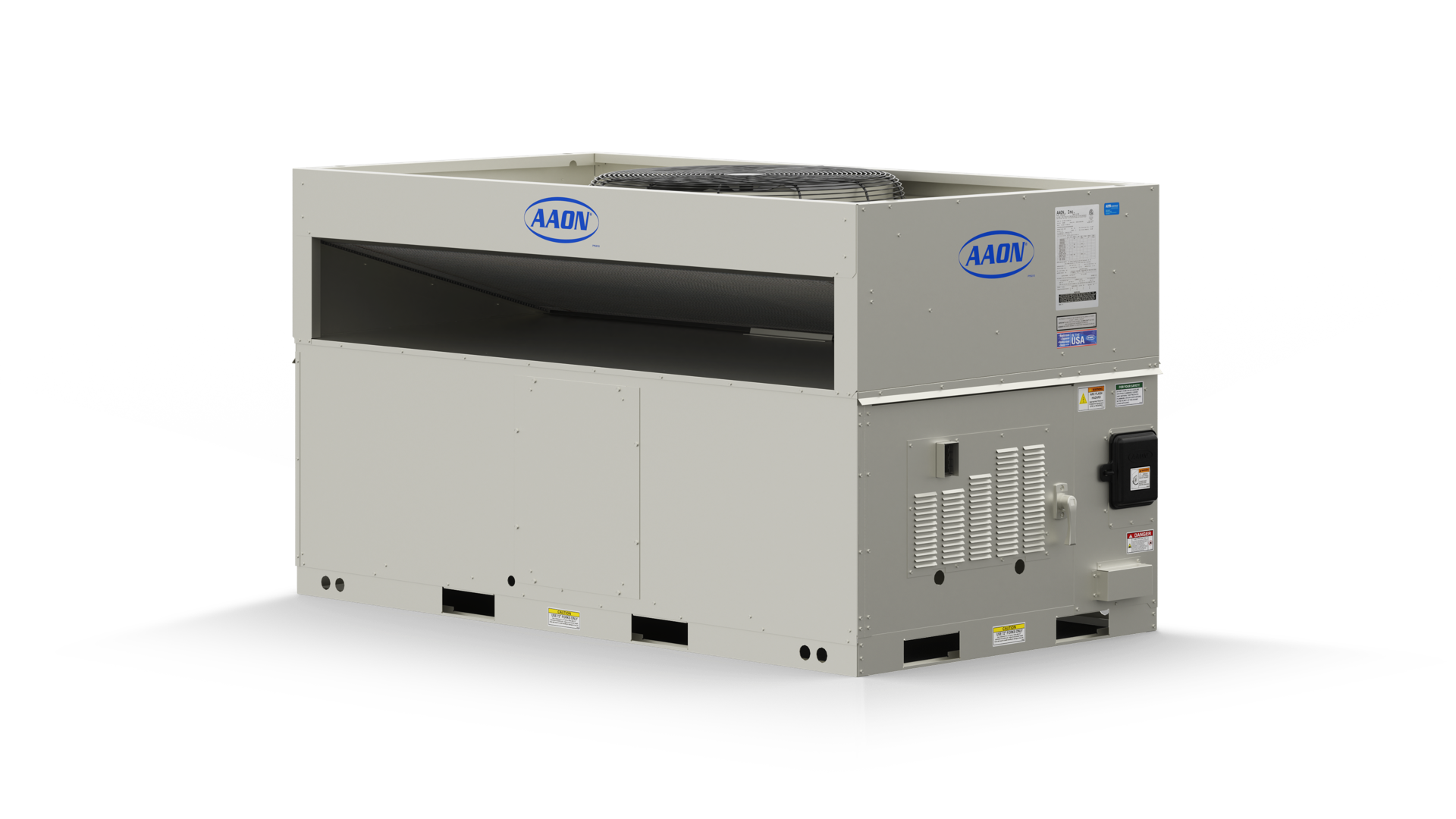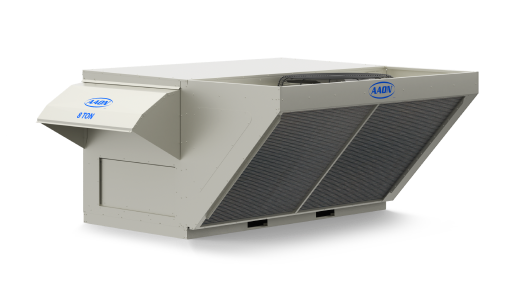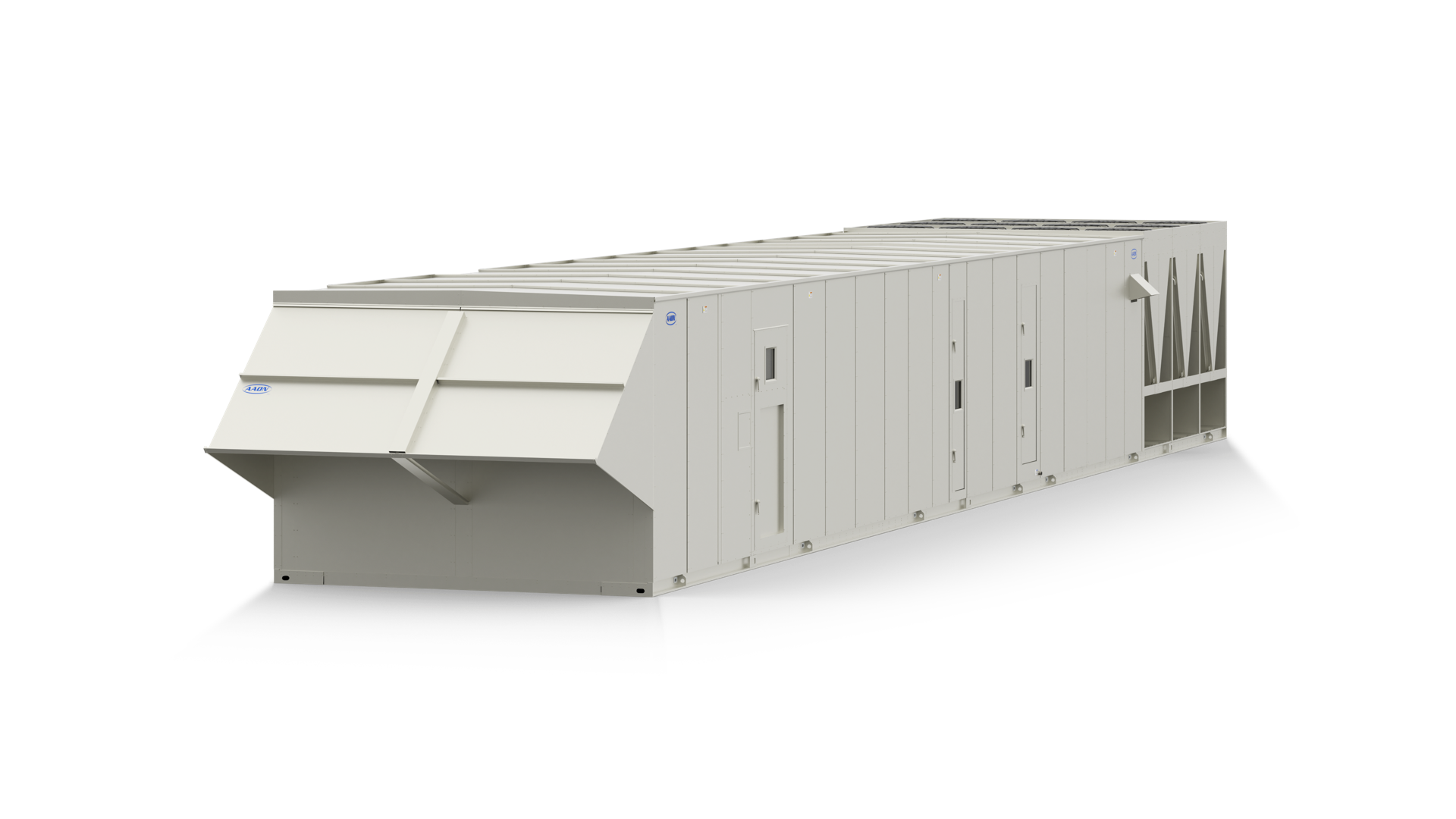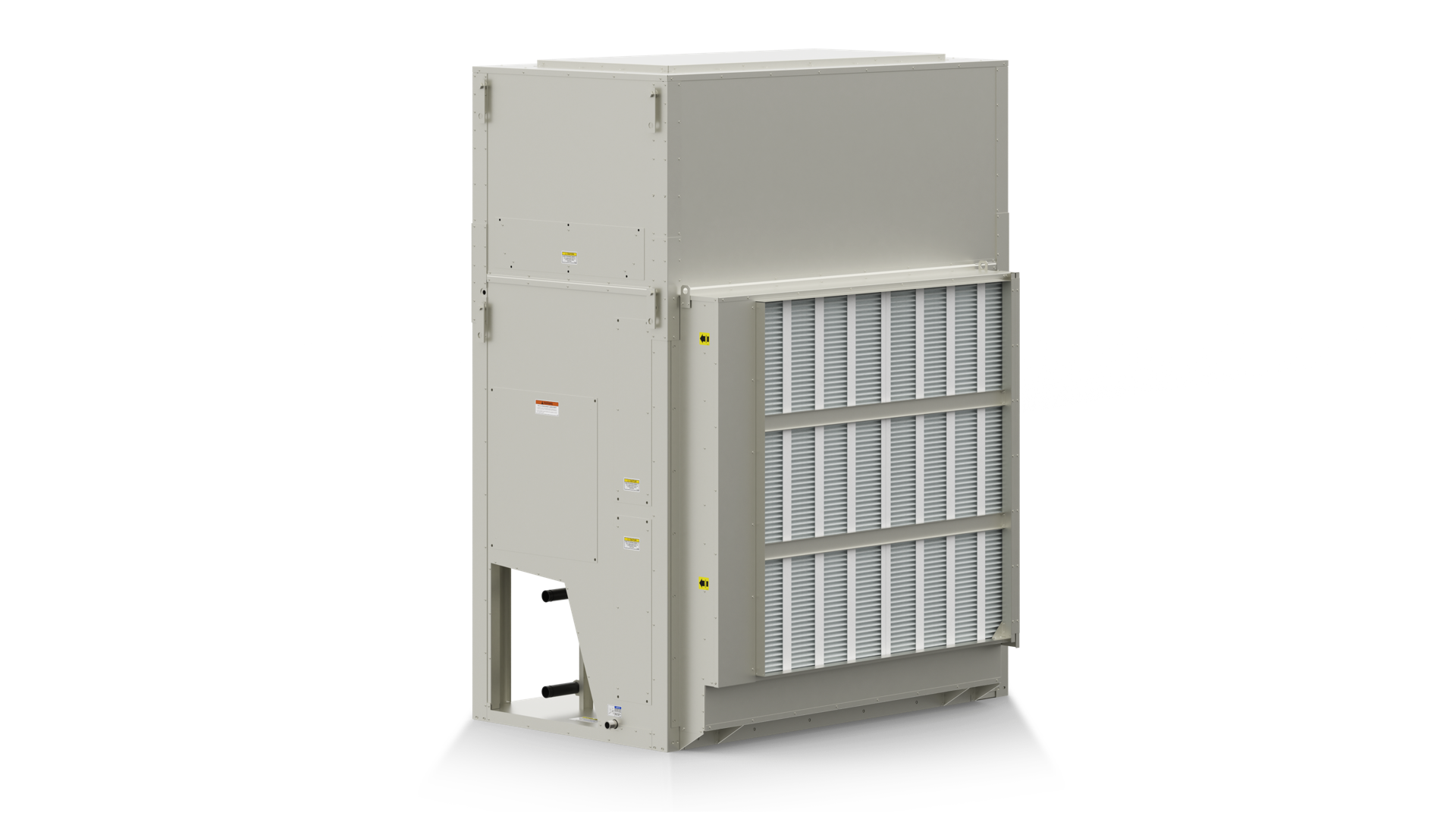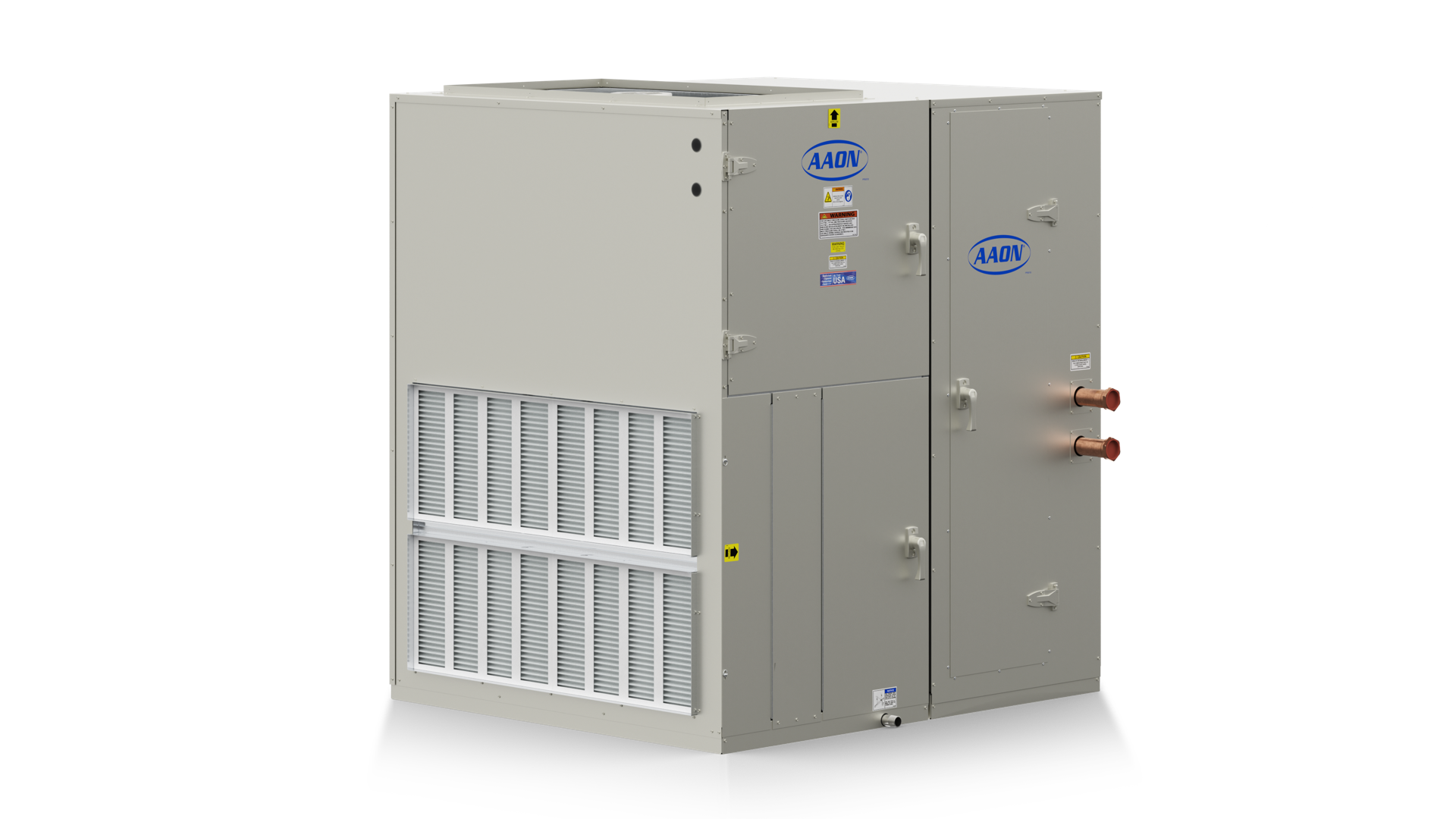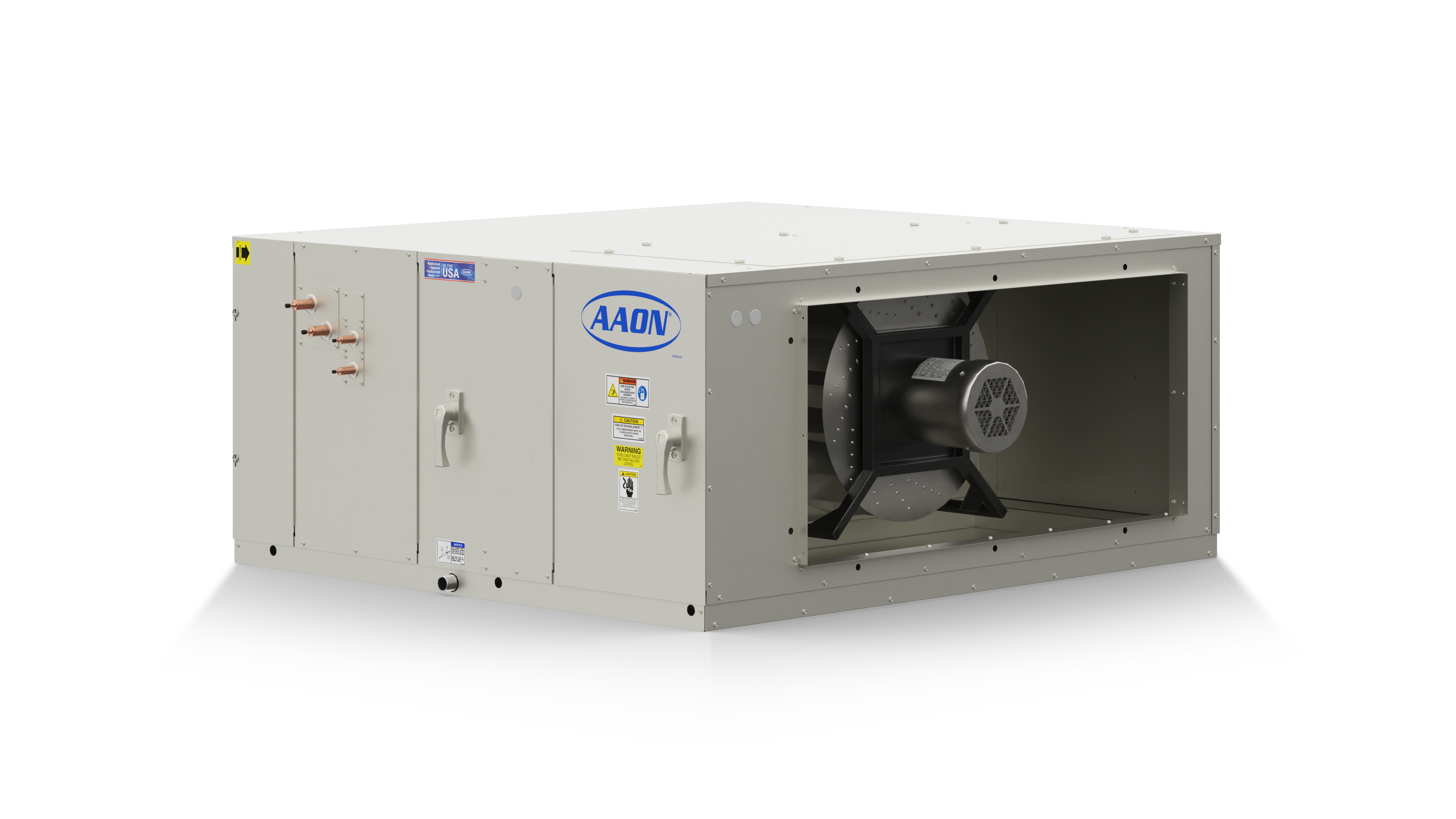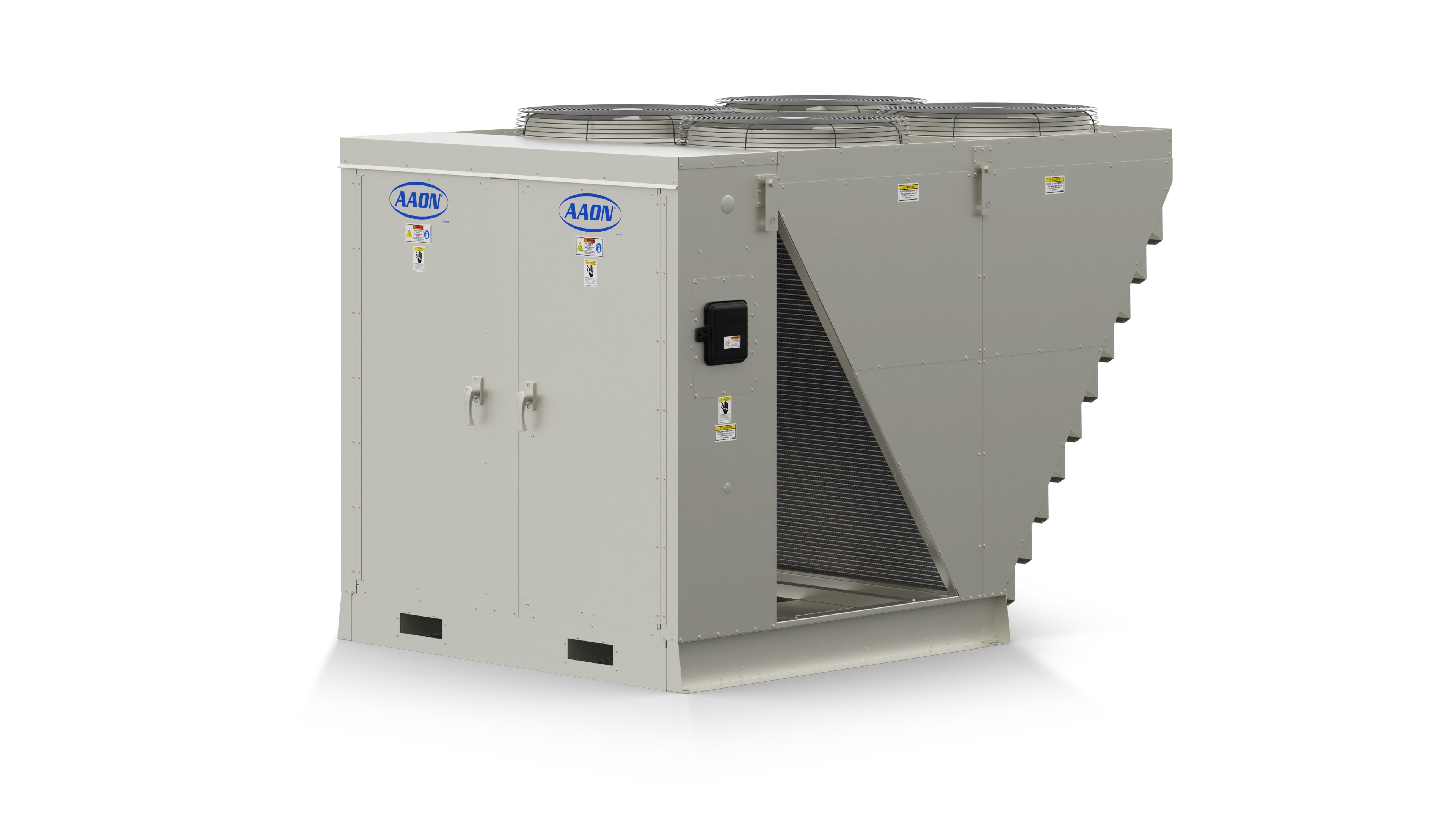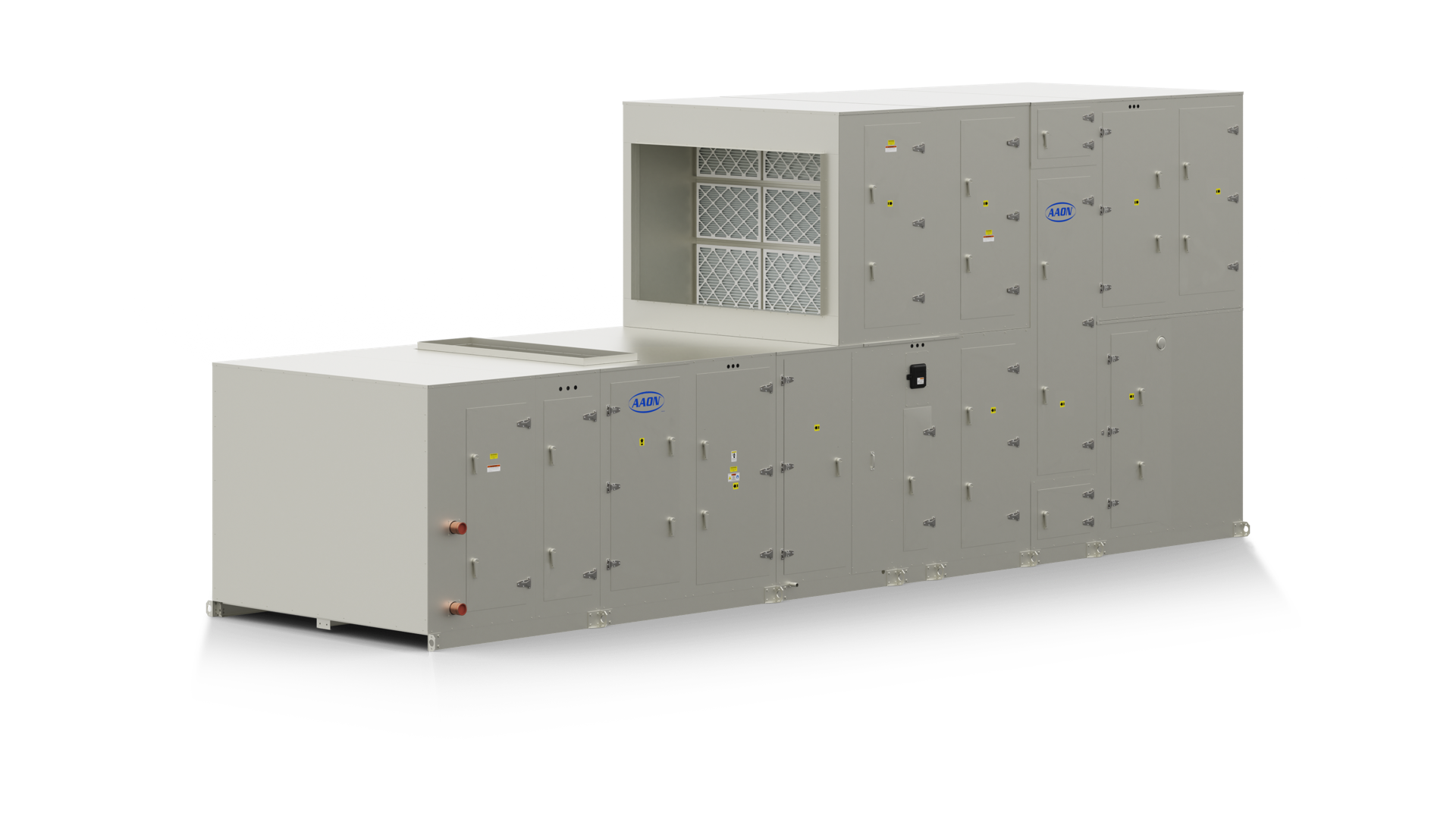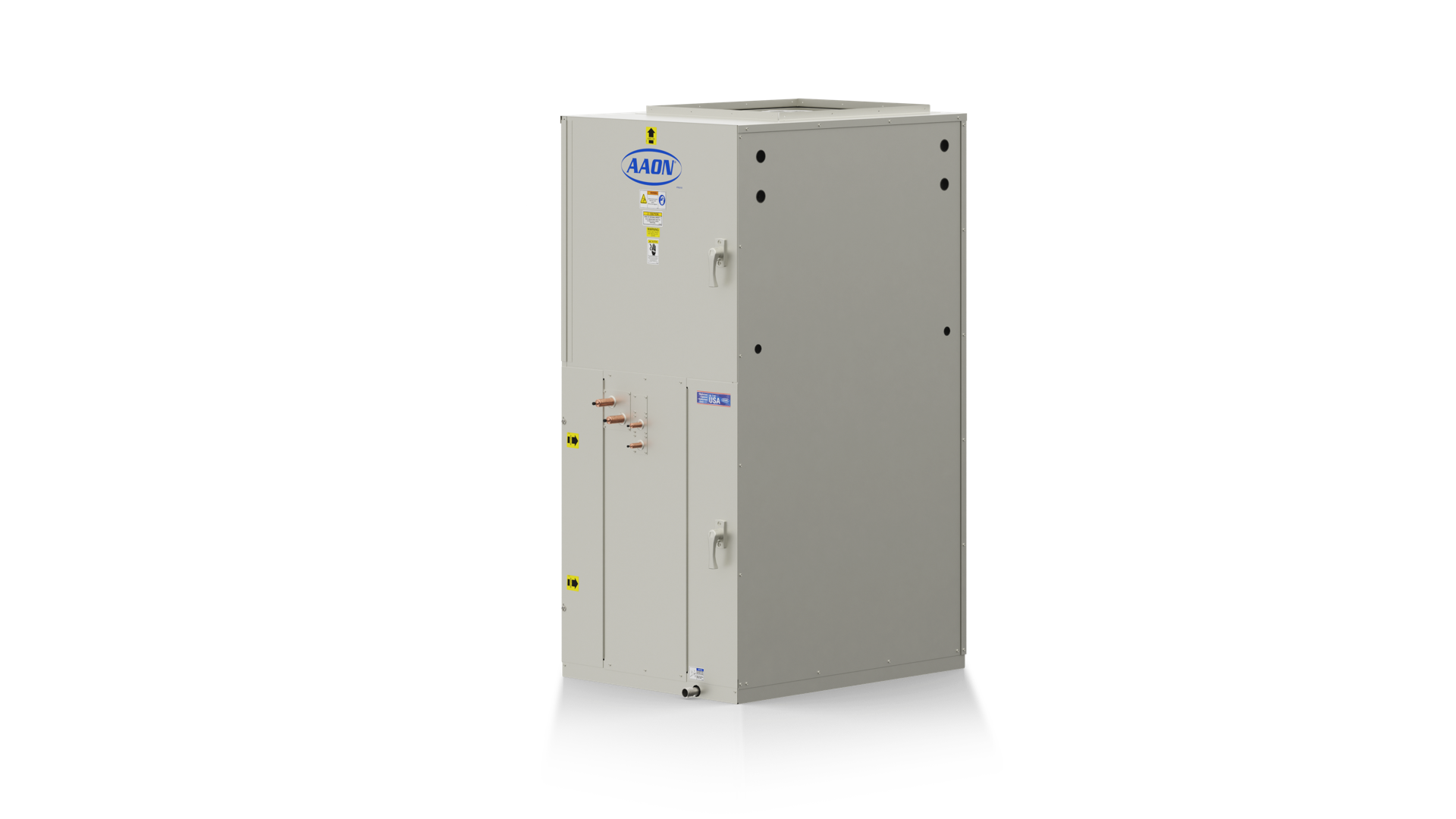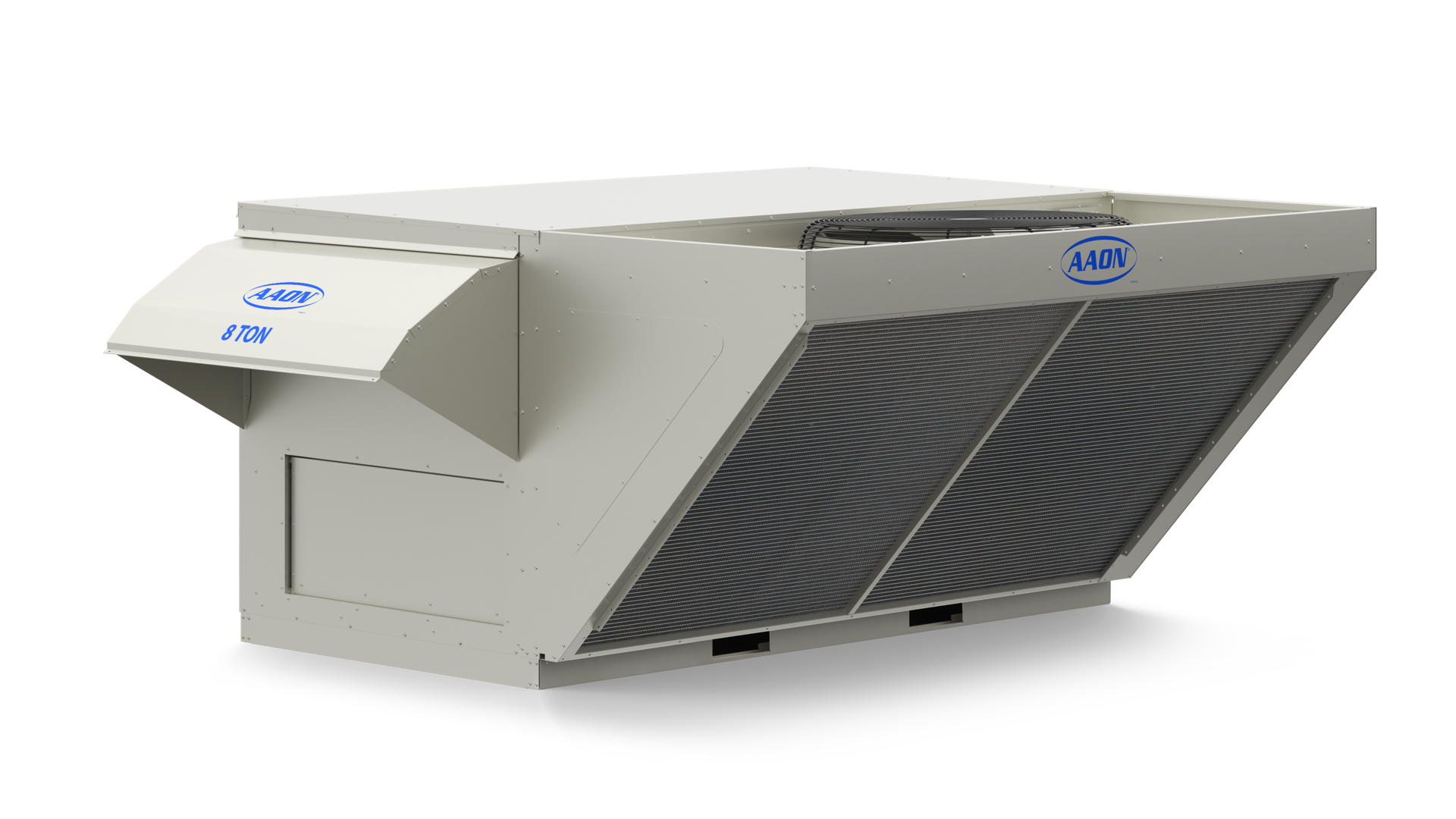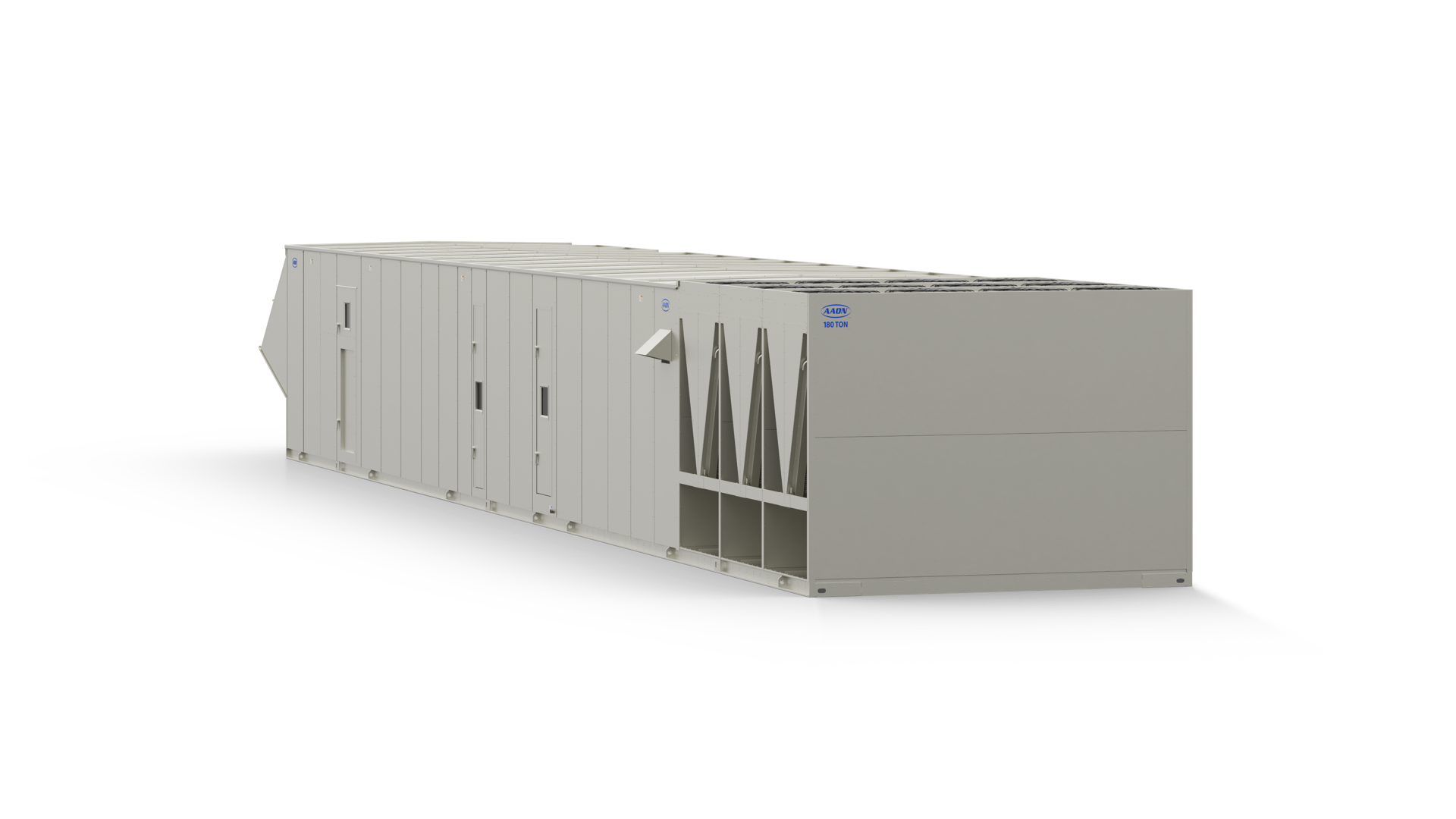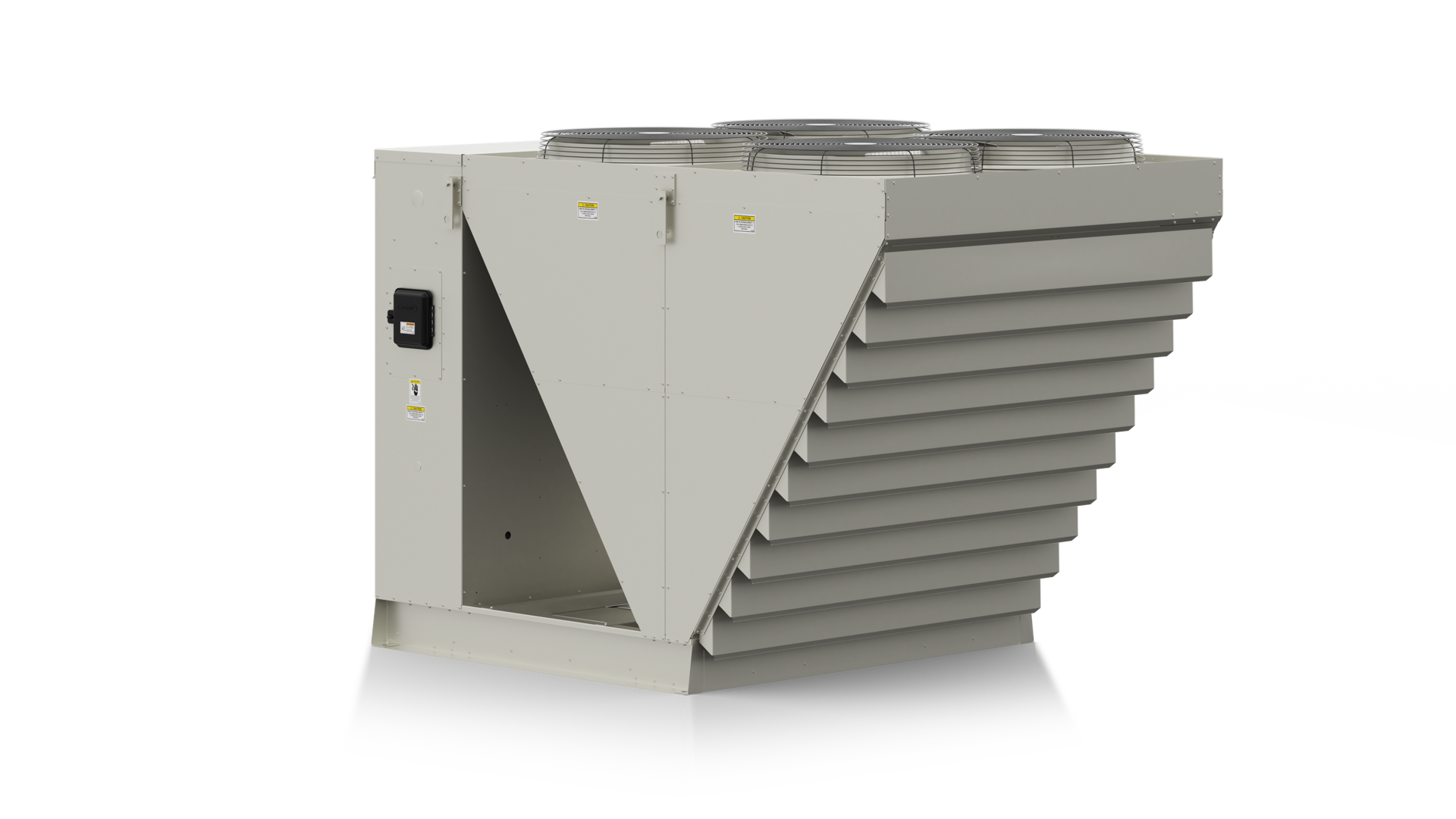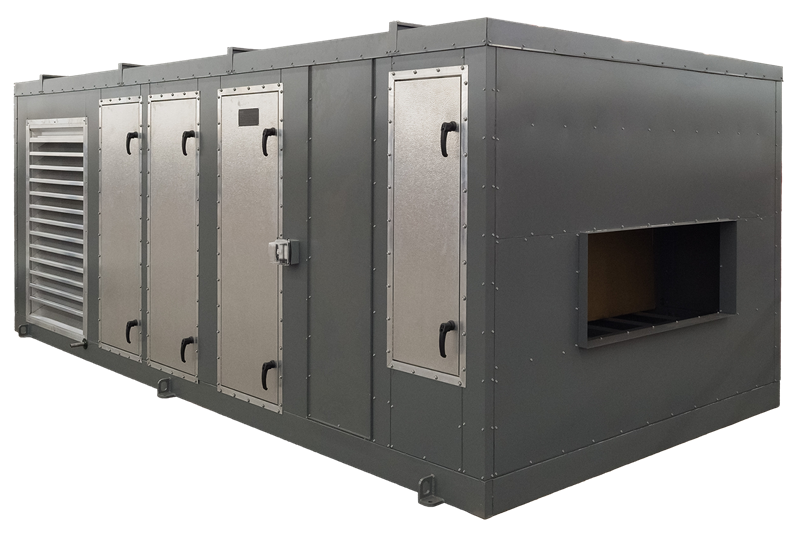Decarbonization
Smart solutions make it possible to achieve decarbonization and environmental sustainability goals.
Whether driven by policy or corporate responsibility, decarbonization initiatives aim to utilize environmentally sustainable energy systems. It's possible to achieve optimal HVAC performance while reducing energy consumption with AAON.
DECARBONIZATION SOLUTIONS
-
About Decarbonization
The primary goal of decarbonization is to mitigate the effects of climate change by reducing greenhouse gas emissions, particularly CO2, which is the main contributor to global warming.
It involves transitioning from fossil fuel-based energy sources, such as coal, oil, and natural gas, to cleaner and renewable energy sources, such as solar, wind, hydropower, and geothermal. -
The Challenge
A challenge for decarbonization efforts has been cold climate environments. Air-Source heat pumps do not use combustion for heat, instead heat pumps transfer heat from one source to another – and with air-source heat pumps, the heat comes from the outside air. The design of traditional air-source heat pumps cannot operate effectively when the outside air drops to a very low temperature.
-
The Solution
AAON Alpha Class heat pumps are configurable to operate at even lower ambient temperatures than traditional air-source heat pumps. Available with higher heating capacities, even down to 0°F outdoor temperatures, means the AAON Alpha Class heat pump is a robust system for all operating conditions.
The primary goal of decarbonization is to mitigate the effects of climate change by reducing greenhouse gas emissions, particularly CO2, which is the main contributor to global warming.
It involves transitioning from fossil fuel-based energy sources, such as coal, oil, and natural gas, to cleaner and renewable energy sources, such as solar, wind, hydropower, and geothermal.
A challenge for decarbonization efforts has been cold climate environments. Air-Source heat pumps do not use combustion for heat, instead heat pumps transfer heat from one source to another – and with air-source heat pumps, the heat comes from the outside air. The design of traditional air-source heat pumps cannot operate effectively when the outside air drops to a very low temperature.
AAON Alpha Class heat pumps are configurable to operate at even lower ambient temperatures than traditional air-source heat pumps. Available with higher heating capacities, even down to 0°F outdoor temperatures, means the AAON Alpha Class heat pump is a robust system for all operating conditions.
Decarbonization Applications
Industries can effectively apply decarbonization HVAC solutions in the following ways:
Transition to Renewable Energy Sources
One effective approach is to shift from fossil fuel-based energy sources to renewable energy sources such as solar power, wind power, or geothermal energy. Installing renewable energy systems to power HVAC equipment, reduces carbon emissions associated with energy generation and consumption.
Electrification of HVAC Systems
Shifting from fossil fuel-powered HVAC systems to electric-based systems can significantly reduce carbon emissions. This can involve replacing gas-powered heating systems with electric heat pumps and utilizing electric-powered chillers and cooling systems. Electrification, especially when powered by renewable energy sources, helps decarbonize the HVAC infrastructure.
Sustainable Building Design
Industries can prioritize sustainable building design practices that incorporate passive cooling and heating techniques, efficient building envelope design, and natural ventilation. By designing buildings to minimize the need for excessive HVAC usage, energy consumption and carbon emissions can be reduced.
Implementing these decarbonization strategies will not only reduce the carbon footprint of industries but also contribute to a more sustainable and environmentally friendly future.
Key Considerations for Decarbonization
Prioritize energy efficiency measures in HVAC systems to reduce energy consumption and associated carbon emissions.
This includes optimizing system design, selecting high-efficiency equipment, and implementing advanced controls and monitoring systems.
Explore the integration of renewable energy sources, such as solar photovoltaic (PV) systems to power HVAC systems.
By utilizing clean and renewable energy, the carbon footprint of the HVAC system can be significantly reduced.
Evaluate the environmental impact of HVAC equipment throughout its lifecycle, including manufacturing, transportation, installation, operation, and end-of-life disposal.
Consider selecting HVAC products with a smaller carbon footprint, low global warming potential refrigerants, and components that are recyclable.
All AAON HVAC products are highly configurable and designed to optimize your exact environment with cutting-edge engineering to push the boundaries in virtually any setting.
AAON stops at nothing to design the very best. Our systems set the industry standard for longevity and low cost of ownership.
AAON equipment is easy to access and convenient to work on. Our award-winning cabinet designs make it simple for technicians to service our units efficiently and affordably.
AAON HVAC units offer easy start-up and renowned reliability. Our products are tested for all functions and receive a unit-specific report before they leave the factory.
Related Products
Dare us to exceed expectations.
Regardless of the challenge, AAON has the capabilities to fulfill project requirements and deliver long-term value to customers. Contact an AAON Representative to learn how our products serve as your solutions.


